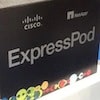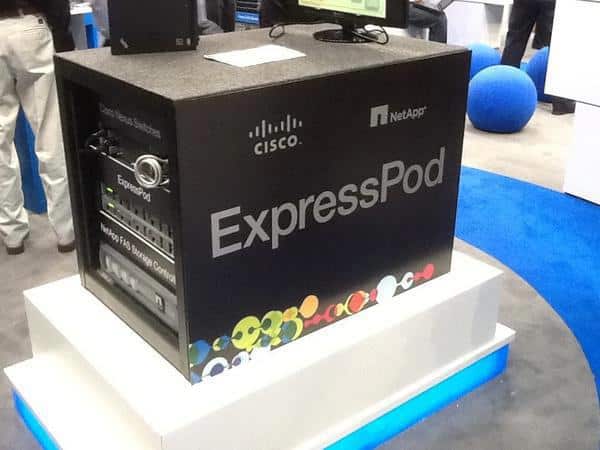 NetApp and Cisco’s joint converged infrastructure system called FlexPod is one of the first validated solutions for Windows Server 2012 and System Center 2012 SP1, and it now features a lot of technological updates. Those updates are significant and include: more advanced switching capability, an update to the platform, and 8 new reference architectures – 4 of which are designed for Oracle workloads. FlexPod’s Microsoft validation and new Oracle workload-oriented architectures demonstrate NetApp’s commitment to deepening their integration. Furthermore, the FlexPod enhancements build on the trend of many enterprise users shifting their datacenters toward implementing converged infrastructures.
NetApp and Cisco’s joint converged infrastructure system called FlexPod is one of the first validated solutions for Windows Server 2012 and System Center 2012 SP1, and it now features a lot of technological updates. Those updates are significant and include: more advanced switching capability, an update to the platform, and 8 new reference architectures – 4 of which are designed for Oracle workloads. FlexPod’s Microsoft validation and new Oracle workload-oriented architectures demonstrate NetApp’s commitment to deepening their integration. Furthermore, the FlexPod enhancements build on the trend of many enterprise users shifting their datacenters toward implementing converged infrastructures.
NetApp and Cisco’s joint converged infrastructure system called FlexPod is one of the first validated solutions for Windows Server 2012 and System Center 2012 SP1, and it now features a lot of technological updates. Those updates are significant and include: more advanced switching capability, an update to the platform, and 8 new reference architectures – 4 of which are designed for Oracle workloads. FlexPod’s Microsoft validation and new Oracle workload-oriented architectures demonstrate NetApp’s commitment to deepening their integration. Furthermore, the FlexPod enhancements build on the trend of many enterprise users shifting their datacenters toward implementing converged infrastructures.

The draw to converged infrastructures (CI) is their ease of implementation and cost savings over the more frequently utilized plug-and-play environments. From start to finish, the amount of time spent by an administrator to get a new system installed is far less with a CI. IT administrators won’t have to research products across a slew of brands, ensure compatibility across platforms, test to gauge performance, as well as face many other issues. However, NetApp and Cisco are aware that some users are hesitant to switch to CI because of the vendor lock-in that might hinder those in the enterprise from using certain applications or gaining performance enhancements. In response to this, NetApp and Cisco have been trying to optimize FlexPod and to make it work better with Oracle and Microsoft in particular.
FlexPod offers validation with Windows Server 2012 and System Center 2012 SP1. On top of FlexPod’s validation there, FlexPod is also validated for Microsoft Private Cloud which offers OCPM (OnCommand Plug-in for Microsoft). OCPM enables users to use System Center 2012 with their NetApp storage to manage and automate it. There are over 1,200 PowerShell cmdlets to run processes more easily and with simpler repetition.
To assist in making FlexPod easier to use, NetApp has included some key features. To start, NetApp FlexCones allows users to create virtual copies of databases without using much incremental storage. Users can test speeds by recreating these clones and quickly deleting older copies. Additionally, NetApp storage can load-balance volumes on-the-fly, and with all of the hardware arriving validated, users can know what kind of performance to expect. Lastly, Native NetApp storage features also integrate with native Oracle technologies such as Recovery Manager and Direct NFS client.
